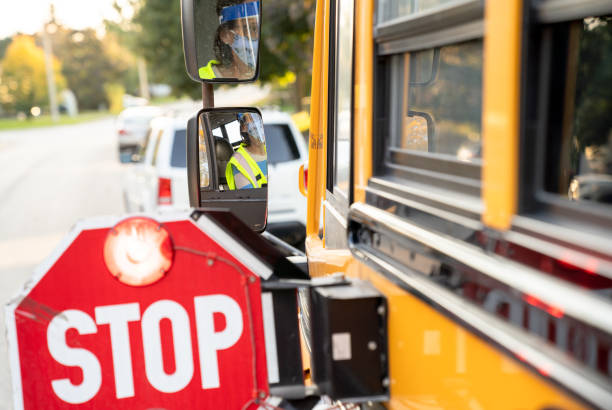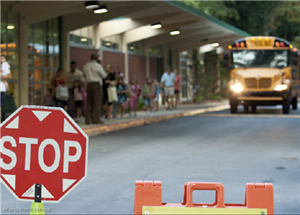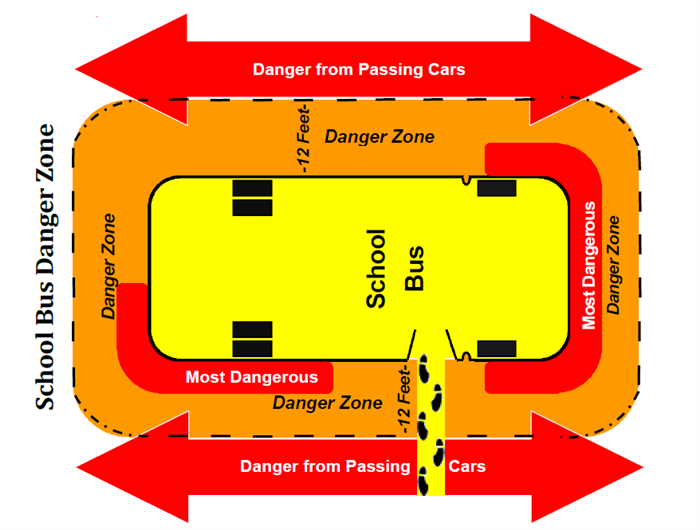- Transportation
- Transportation Policy & Bus Stop Procedures
-



Transportation Policy & Bus Stop Safety Procedures
🚸 APS Transportation Policy: Walk-Zones & Bus Eligibility
Atlanta Public Schools (APS) transportation policy places bus stops outside the shortest:
-
1-mile navigation distance for elementary schools
-
1½-mile navigation distance for middle and high schools
Students who live within these distances are designated to the walk-zone and are not assigned bus transportation.
🛑 Walking Safety Tips
Ensure your student’s walk to school is safe.
👉 Read important walking safety tips here
📌 Have Questions? We're Here to Help
🚍 APS Department of Transportation
📞 (404) 802-5500
For all transportation questions and concerns.🏡 Home & Community Support
Contact Dr. Jacquelyn Anthony, APS Social Work Services Director:
📞 (404) 802-1900
Or reach out to your school’s social worker.
👉 Click here for more information
❤️ Transportation Hardship Support
Some students may qualify for special accommodations.
👉 Learn about hardship transportation supports hereAtlanta Public Schools Safe Bus Stop & Student Transportation Guidelines
Introduction
A safe bus stop ensures students can enter and exit a school bus and cross the roadway safely. Safety is not only about the physical location but also the conditions students encounter while waiting for transport.
Georgia Laws Regarding Bus Stops
-
GA Law 40-6-164: A bus may not proceed after stopping until all crossing children have safely crossed the roadway.
-
GA Law 40-6-163: Vehicles must stop when a bus stop arm is extended during student loading/unloading (with exceptions on divided highways). Bus drivers are required to report violations to local law enforcement.
Bus Stop Requirements
APS bus stops must meet the following:
-
40 feet away from intersections or traffic control signals.
-
No student should cross multiple traffic lanes.
-
Bus stops must be visible from 300 feet in all directions.
-
Students must stand at least 12 feet from the bus's path.
-
Stops spaced no closer than ¼ mile apart.
-
No stops in:
-
Cul-de-sacs
-
Railroad crossings
-
High-volume roads or highways
-
Intersections/corners
-
Hazard/no transport zones
-
Private roads/property
-
Guidelines for Assigning Safe Bus Stops
-
Walk Zones
-
Elementary: no bus if within 1-mile navigation
-
Middle/High School: no bus if within 1½-mile navigation
-
-
Walking Distance
-
Stops may be up to ½ mile apart.
-
Students may walk up to ¼ mile to reach their assigned stop.
-
Supervision Required: Students 8 and under must be met by an adult or designee; otherwise, they will be returned to school.
-
DFACS Guidelines:
-
Ages 8 & under: never left alone.
-
Ages 9–12: short periods alone, based on maturity.
-
Age 13+: can supervise others (except in foster care or with medical needs).
-
-
-
Adult Identification
-
Drivers must see and identify adult/designee at the stop.
-
Adults must exit their vehicles and stand at the stop at least 5 minutes before arrival.
-
-
Stop Location Restrictions
-
No blind spots: avoid curves and hills (visibility must be 300 feet).
-
No stops near operational railroad crossings.
-
Prefer sidewalks or safe roadside spacing.
-
Stops must not require reverse movement by the bus.
-
-
Stop Timing & Exceptions
-
Buses wait no longer than 2 minutes at any stop.
-
No unscheduled stops or exceptions unless approved via Dispatch.
-
School loading zones are official stops.
-
Students must never be required to cross multi-lane roads or railroads.
-
-
Turnaround Protocol
-
Pickup: board students first, then turn around.
-
Drop-off: turn around first, then release students.
-
-
Left-Side Stops
-
Students must cross at least 3 steps ahead of the bus.
-
Wait for the stop arm and signals before crossing.
-
Always follow the driver’s directions and watch for unauthorized vehicles.
-
-
High-Crime Areas
-
Stops will not be placed where high crime is documented.
-
Authorized Bus Passengers
Only the following are permitted on APS buses:
-
APS employees
-
Enrolled APS students
-
Approved individuals by the Director of Transportation
High Priority Safety Rules for Students
At the Bus Stop
-
Arrive 5 minutes early.
-
Stand 12 feet from the road.
-
Keep electronics packed away.
-
Do not chase the bus or go to another stop.
The School Bus Danger Zone
-
A 12-foot area around the bus where visibility is limited.
-
Stay clear of:
-
Front and rear tires
-
Front bumper and door areas
-
If you drop an item:
-
Move out of the Danger Zone
-
Wave to get the driver’s attention before retrieving anything

Loading on the Roadway
If NOT crossing the road:
-
Wait 12 feet from the road
-
Approach only after the bus stops and traffic halts
If crossing the road:
-
Wait for the driver’s signal
-
Cross 12 feet in front of the bus
-
Look both ways while crossing
-
Never retrieve dropped items without driver approval
Unloading on the Roadway
If NOT crossing the road:
-
Walk directly away from the bus
-
Remain visible to the driver
If crossing the road:
-
Exit and walk to the front-right of the bus
-
Make eye contact with the driver
-
Wait for two crossing signals: at the crossing gate and road center
-
Cross directly and never behind the bus
Unloading at School
-
Walk straight toward the school
-
Stay away from the bus and parked vehicles
-
Never run or chase items under the bus
Loading at School
-
Walk directly to the bus door
-
Be visible to the driver
-
Promptly board — no chasing the bus
Reminders
-
Never approach a moving bus.
-
The bus driver is the authority on all safety concerns.
-
Safety is a shared responsibility — always remain alert.
-


